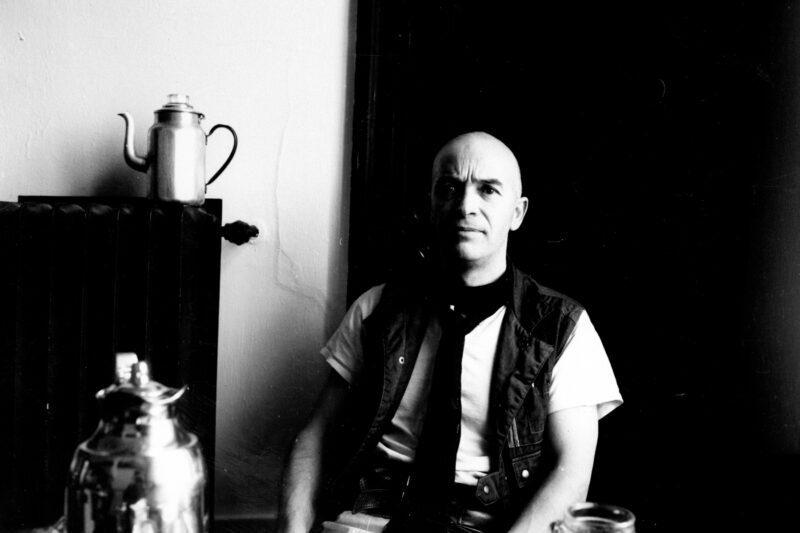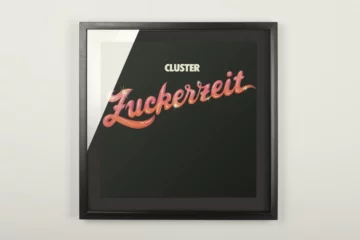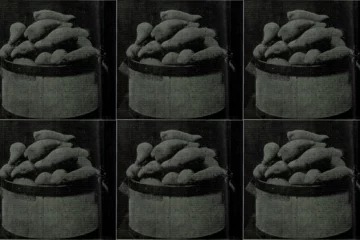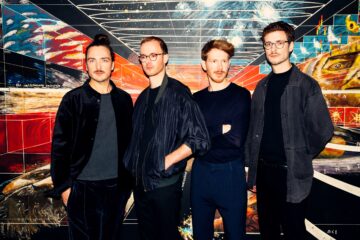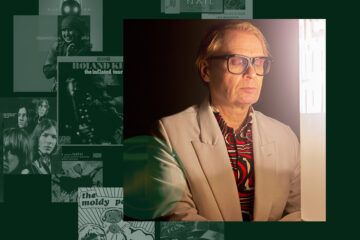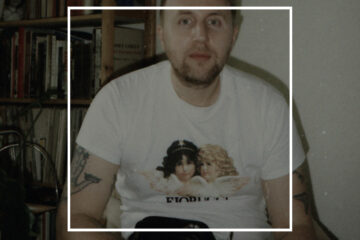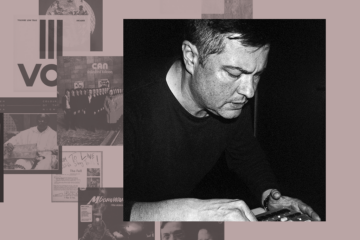It appears as if Conrad Schnitzler is th greatest footnote in music history. As co-founder of the Zodiak Free Arts Lab in Kreuzberg, he laid the foundation for the West Berlin underground scene; he was a member of the early formations of Kluster and Tangerine Dream; got a young Düsseldorf band called Kraftwerk their first synthesizer and another called Ton Steine Scherben amplifiers for their first gigs; and was besieged by a disheveled Norwegian in the 1990s – he wanted to use a piece of Schnitzler’s for his band’s debut release. Schnitzler sent it to him one New Year’s Eve and it ended up with it on a milestone of the Norwegian black metal scene, the EP »Deathcrush« by Mayhem.
Some of these facts dominate the very brief German Wikipedia entry on Schnitzler which comes with an incredibly brief discography that cannot even begin to document his comprehensive oeuvre – Discogs counts more than 230 releases, but the actual figure will be much higher, because countless releases are still locked away in his archives managed by Ton Steine Scherben drummer Wolfgang Seidel. Looking at the quickly available information, it almost seems as if Schnitzler’s own musical contribution is negligible, his helping hand for others the most important feature of his long career. He may even have liked that, however, in a perverse way: Conrad Schnitzler felt most at ease at the margins, after all.
Or rather: he was evading standstill, crossing borders all the time. Schnitzler described himself as an »intermedia« artist. Sculptures, video, installation, and performance art: he repeatedly mixed all of these with each other and with music. In the 1980s, for example, he wandered through Berlin as an »electronic busker« or roamed the Austrian city of Linz during the Ars Electronica Festival as a »living sound cloud« – dressed in a suit into which he had sewn cassette recorders. He didn’t feel at home in neither the white cubes of the art world nor the black boxes of music venues, preferring to drift through public space and find his audience himself instead of entertaining the same people with the same backgrounds over and over again.
The fact that Schnitzler moved across the various art forms and genres is probably also due to the synesthetic experience that provided the initial spark for his career. After living through the Second World War as a child, he began training as a machine fitter in the early 1950s. The rattling, the rhythms, the noise and the appearance of the equipment magically attracted him. A good quarter of a century later, he was to process these impressions in one of his poppiest pieces, »Fabrik.« Above all, however, his entire musical output is marked by repetitions that are not repetitive; by rhythmic structures that, in combination with one another, rumble wildly like carelessly maintained gears.
Schnitzler was also a globetrotter, for whom both the art and music scenes and his by no means denazified homeland often became too confining. When compulsory military service was introduced in the late 1950s, he took to his heels, became a sailor, and holed himself up deep inside the engine room of cargo ships, if only for the sake of aesthetic experience. When, after returning to his native Düsseldorf, he enrolled at university, he did not have an academic career in mind, but wanted to sit in the front row with Joseph Beuys. Even if he found little to like in Beuys’ artistic practice, at least the artist’s theory was immensely influential on him: Schnitzler’s sound art installations, such as wall-mounted radios that reproduced the sounds of violins played by the audience, are clearly in the tradition of social sculpture.
The Beyusian dictum that everyone is an artist also influenced Schnitzler, a self-confessed non-musician, in his thinking and even more so in his practice. After moving to West Berlin in the early 1960s, he founded bands with names like Geräusche or Plus Minus, while scraping by with odd jobs. This was followed by the founding of Zodiak Free Arts Lab, two LPs with Kluster, an album with Tangerine Dream, and finally, starting in 1973, a series of self-published solo releases. No titles, minimalist design, very small editions: Schnitzler produced his electroacoustic and later electronic music completely bypassing the market.
»The common thread running through all the stories is Schnitzler’s ability to inspire others«
Wolfgang Seidel
It was not until the late 1970s that a kind of professionalization began to take hold in Schnitzler’s work. The album »Con,« now also known as »Ballet Statique,« was his first release on a major label and remains one of his best known works. It is music that at times seems to anticipate techno, as with the track »Zug,« but equally offers explorations of harsh noise and countered the cosmic Krautrock of his former bandmate Klaus Schulze with a sober poetology more interested in individual sound events and their abrasive interplay and overlap than in grandiose narrative arcs. Music as noise, form as chance.
In 1980 and 1981, Schnitzler nevertheless leaned towards classical song structures, albeit under his very own conditions. The single »Auf dem Schwarzen Kanal« (»On the Black Channel,« named after a weekly series of political propaganda programs broadcast by the GDR’s Deutscher Fernsehfunk) was released on the major label RCA and came with tongue-in-cheek visuals – »Super-Sound-Single – Disco-Remix« is written above a striking photography of his face face made up in black and white – as well as grooves leaning heavily on the sound of the New German Wave and even lyrics, rarely heard from him before or since. On the album »Con 3« for the Krautrock label Sky, he further refined this approach, but again seemed audibly dissatisfied with the confines of pop songwriting. Underneath the ironic, sometimes schlager-esque tunes he sang, it bubbled, shimmered and whirred restlessly.
In fact, Schnitzler soon withdrew for good from the music business, in whose door he had barely set foot. He played his last concerts in the early 1980s and shifted back to releasing cassettes, often self-published or on specialty labels like Generations Unlimited. Only occasionally did he release LPs, for which he only teamed up briefly with small record labels like Qbico – he never signed a contract once in his long career. From the mid-1980s at the latest, he increasingly sought out collaborations with others, such as Gen Ken Montgomery, for his sonic experiments. Even performances of his music were taken over by third parties: for the legendary »cassette concerts« they were provided with his tapes so that they could mix the recordings in front of the audience like DJs.
This also explains why his work is still being reinterpreted or (re)constructed by other artists today. A few days before his death in 2011, Borngräber & Strüver released »Con-Struct,« the first release in a series of albums with the same title that started on m=minimal and has since been continued by Bureau B and for which artists such as Pyrolator, Pole or Frank Bretschneider made use of previously unreleased material provided to them by his estate to create their own interpretations of it. The œuvre as an open source archive: Who else would keep it that way?
»The common thread running through all the stories is Schnitzler’s ability to inspire others,« wrote Wolfgang Seidel in an obituary for his longtime friend. That, after all, is what »intermedia« also means: that media mediate between people and their very specific artistic visions. Schnitzler thrived through his connections to other outsiders of the art and music world as well as between the individual art forms. He let them collide like the sounds he worked with. Whether with distorted string instruments, miked everyday objects, synthesizers or, as in his late work, on the piano – Schnitzler was not a composer, but a con-structor who used sound as building blocks, assembling them into dynamic sculptures.
It seems only logical, then, to call Conrad Schnitzler a radical, were it not for the fact that this word etymologically refers to roots that he himself never struck. Despite his love of Berlin, despite his retreat to rural Dallgow near the capital – Schnitzler remained throughout his life a person evading standstill, at home nowhere but in the midst of disorder. He died of cancer on August 4, 2011. He was buried all over the world: even before his death, he sent his DNA in the form of hair to friends all over the world, who buried it in various places. As befits someone constantly crossing borders.

